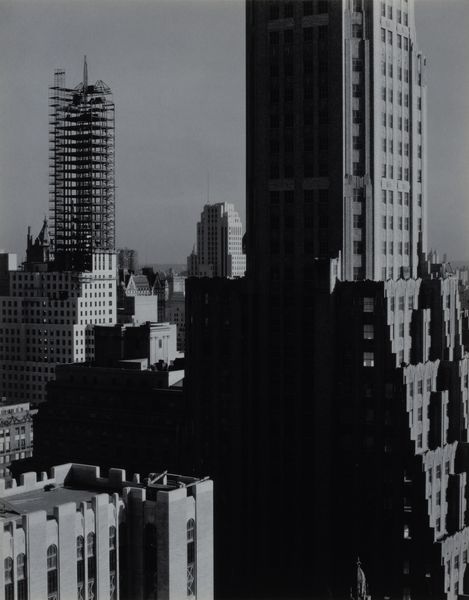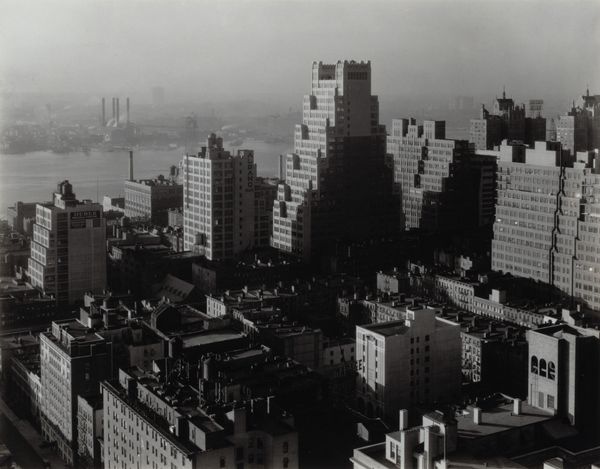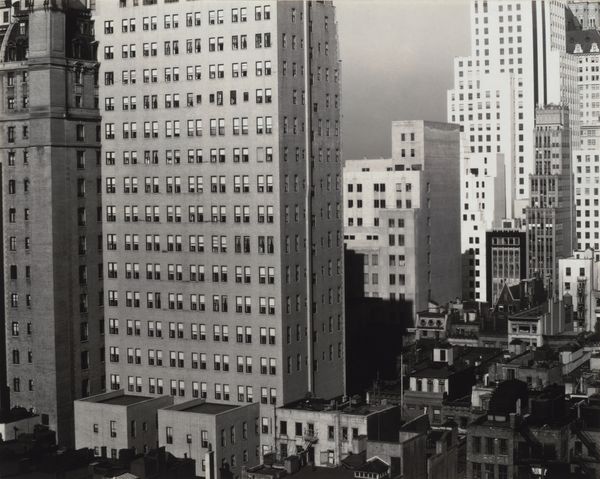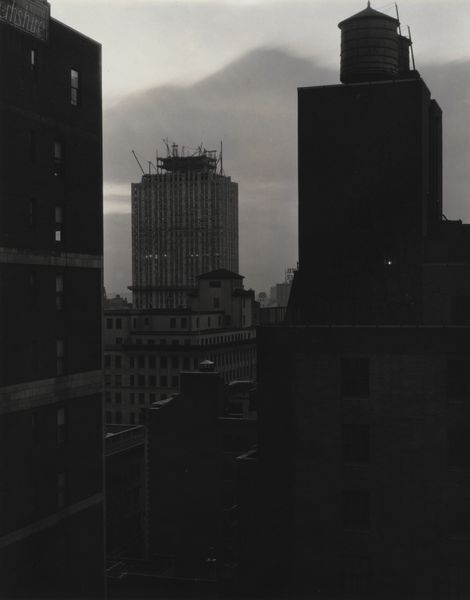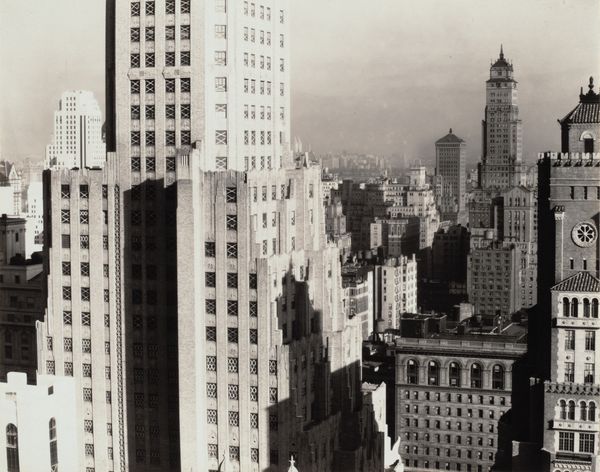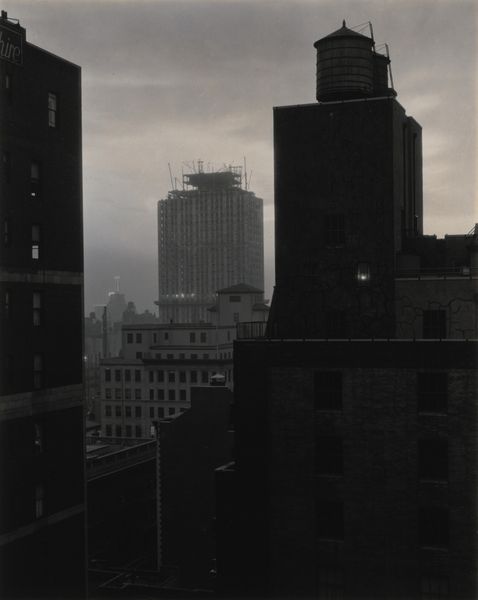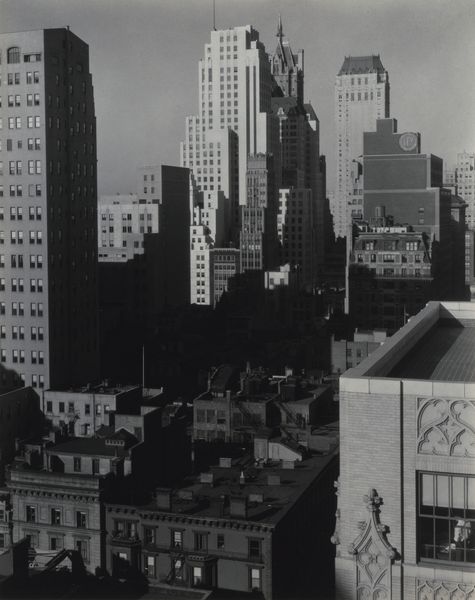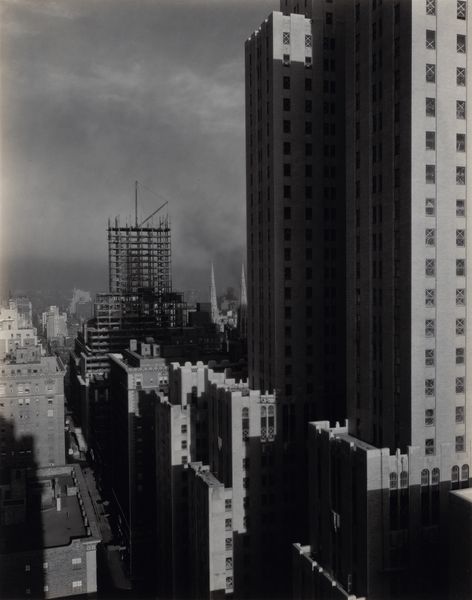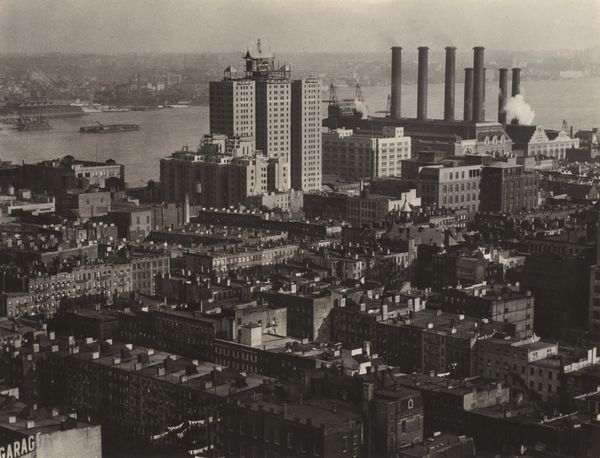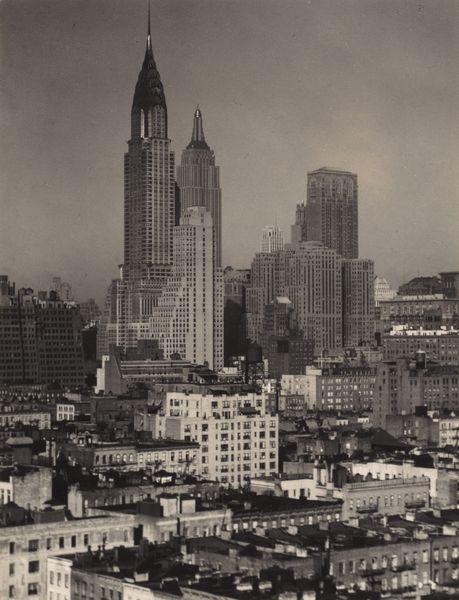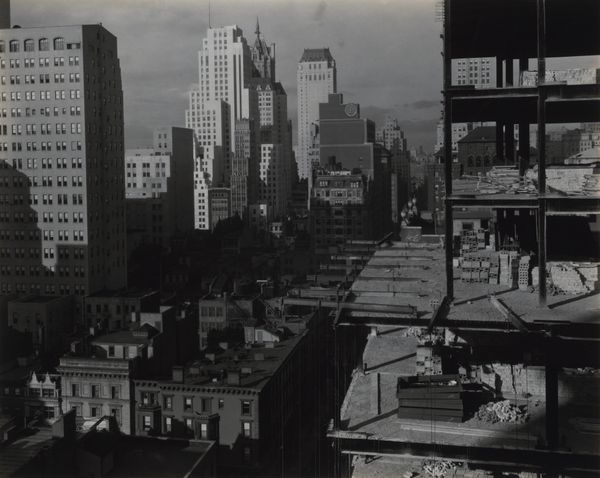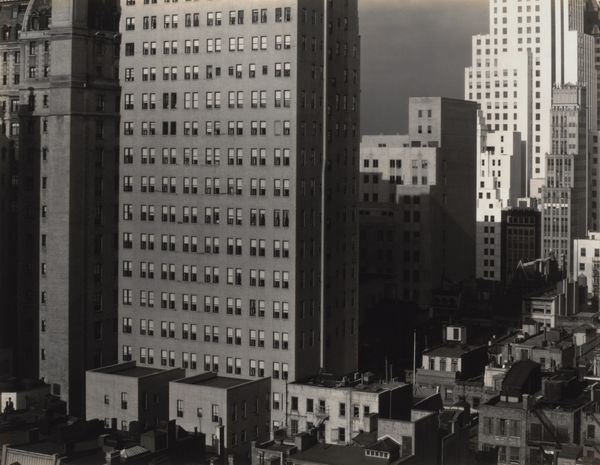
photography, gelatin-silver-print
#
precisionism
#
black and white photography
#
photography
#
black and white
#
gelatin-silver-print
#
monochrome photography
#
street photography
#
cityscape
#
monochrome
#
modernism
#
monochrome
Dimensions: sheet (trimmed to image): 19.2 x 23.9 cm (7 9/16 x 9 7/16 in.) mount: 55.4 x 46 cm (21 13/16 x 18 1/8 in.)
Copyright: National Gallery of Art: CC0 1.0
Curator: Looking at Alfred Stieglitz’s gelatin silver print, "From My Window at the Shelton, Southeast," created in 1931, we see an iconic view of New York’s urban landscape. Editor: Immediately, what strikes me is the dense materiality of the city rendered in stark black and white. It’s almost a topographical study in concrete and steel, yet softened by the hazy atmosphere. Curator: It’s true, the cityscape is palpable. Stieglitz photographed this view from his apartment at the Shelton Hotel. The series is significant because it captures the city's transformation during the early 20th century, reflecting modernist themes of progress and urban dynamism. Editor: I am particularly drawn to the layers of production—the photographic process itself, with its chemicals and darkroom manipulations, contrasting with the industrial production that erected these towering buildings. The image becomes a document of intertwined processes, revealing how materials shape our lived environment and perceptions of modernity. Curator: Precisely. Stieglitz’s elevated perspective lends the photograph a sense of detached observation. Yet, it also suggests his personal relationship with the city, framed by the window of his home. It shows how the politics of imagery and architecture affect public space and everyday life. Editor: Considering its reception, it must have been groundbreaking for its time—not only capturing the city’s modernity but also exploring the very means of production, questioning high art’s separation from craft and labor through such a visible display of material and consumption. The social context, particularly labor's role in constructing this very cityscape, becomes evident. Curator: Indeed, “From My Window at the Shelton, Southeast” presents an unparalleled look into a crucial point of history, a document in New York's evolution through social and technological forces that shaped its urban form. Editor: Ultimately, seeing this photograph as a conversation—between photographer and subject, material and image—emphasizes the importance of production within the larger narratives of progress and perception.
Comments
No comments
Be the first to comment and join the conversation on the ultimate creative platform.
